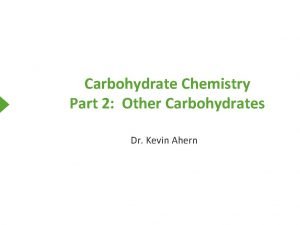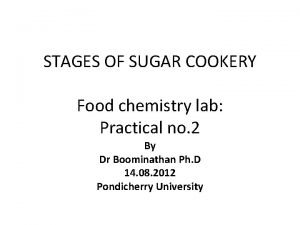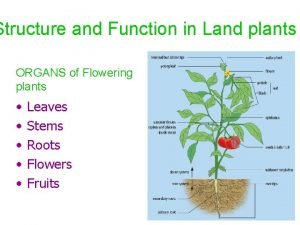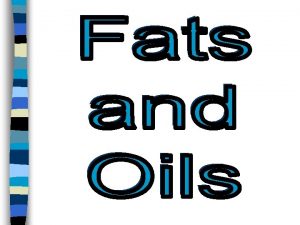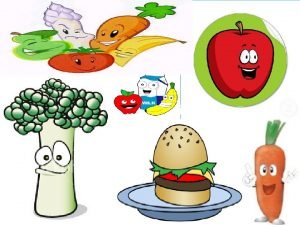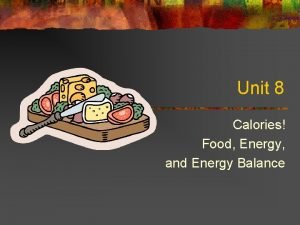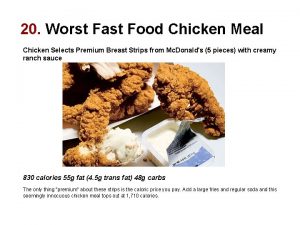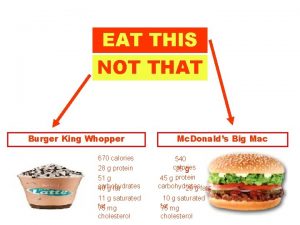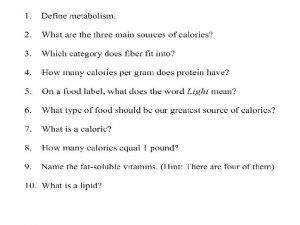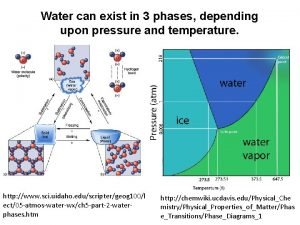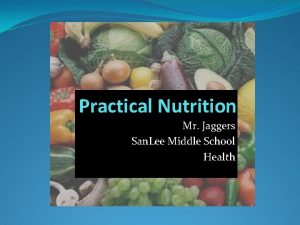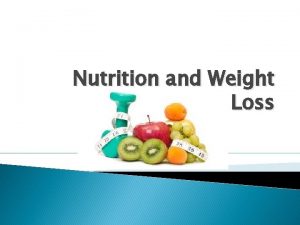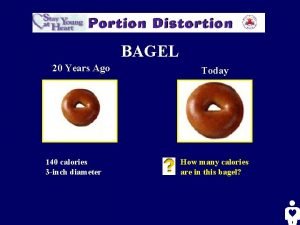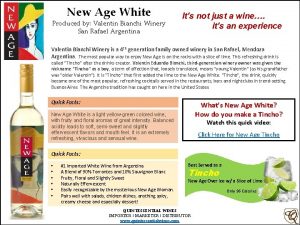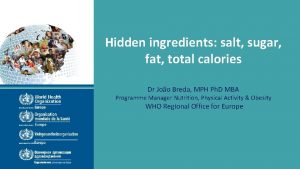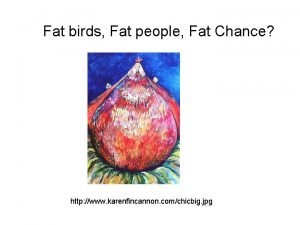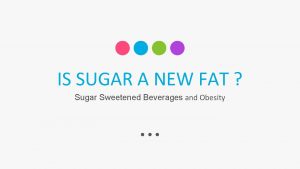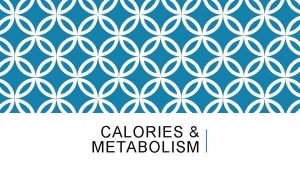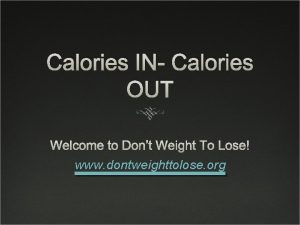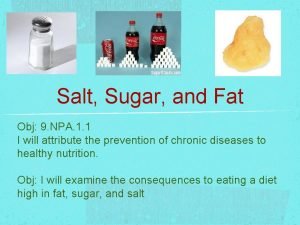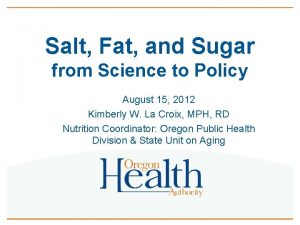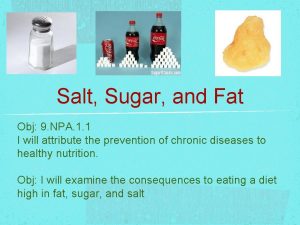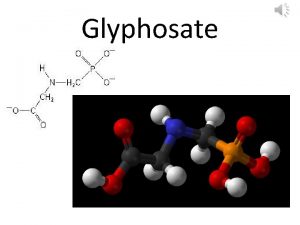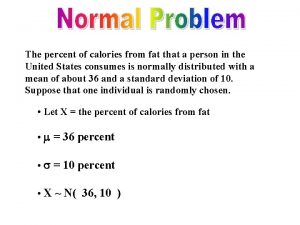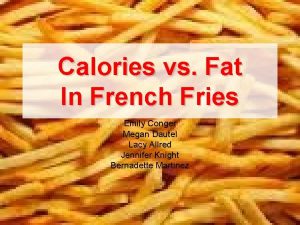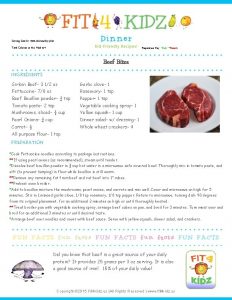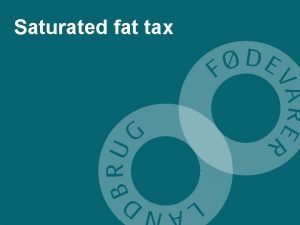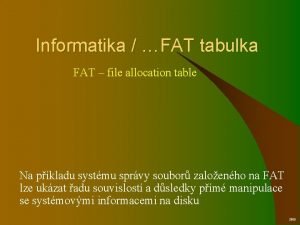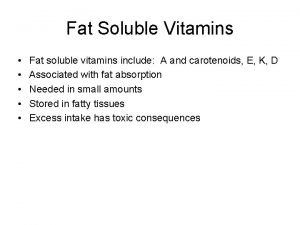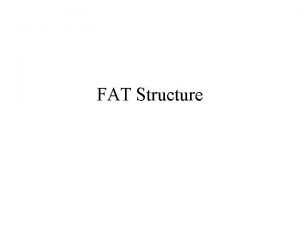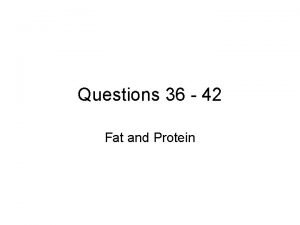Hidden ingredients salt sugar fat total calories Dr





























- Slides: 29

Hidden ingredients: salt, sugar, fat, total calories Dr João Breda, MPH Ph. D MBA Programme Manager Nutrition, Physical Activity & Obesity WHO Regional Office for Europe

NCD targets – a challenge for Europe 2025

WHO European Region MS achieving global targets around nutrition & physical inactivity by 2025 - updated Adult obesity Salt reduction Breastfeeding Physical inactivity Childhood obesity 0% 10% 20% 30% On track 40% 50% off track 60% 70% 80% 90% 100%

WHO GUIDELINES AND MANDATE

WHO sodium guidelines (2013) • WHO recommends a reduction to <2 g/day sodium (5 g/day salt) in adults (strong recommendation) • In children, WHO also recommends a reduction in sodium intake to control blood pressure (strong recommendation). • The recommended maximum level of intake of 2 g/day sodium in adults should be adjusted downward based on the energy requirements of children relative to those of adults

2015 sugar guidelines • WHO recommends reduced intake of free sugars throughout the life-course (strong recommendation) • In both adults and children, WHO recommends that intake of free sugars not exceed 10% of total energy (strong recommendation) • WHO suggests further reduction to below 5% of total energy (conditional recommendation)

Association between free sugars intake and measures of body fatness in children % 0 1 n a ore th o m n : e n lin a e h t d i e u mor O g tter e H o b n W , • t 5% children u b V TE 6 – 1 0 2 A – H /day A p r • a ug s g 5 2 Source : Te Morenga et al. , 2012

Limit saturated fats and avoid i. TFAs • • Saturated fatty acids and trans fatty correlated with CVD Saturated fatty acids are found in foods from animal sources Industrially-produced trans-fatty acids (i. TFAs) can be found in baked and fried foods, prepared snacks and partially hydrogenated cooking oils and spreads. Results of recent WHO systematic reviews show that replacing saturated fatty acids and trans fatty acids with other macronutrients, particularly PUFA, has a favourable effect on CVD risk.

IARC monographs (Aug 2016) • Overweight / Obesity • Confirmed: colorectal, oesophagus, kidney, breast in postmenopausal women, endometrium • new: gastric cardia, liver, gallbladder, pancreas, ovary, thyroid, meningioma, and multiple myeloma

WHO Mandate on Nutrition, Diet & Obesity in Europe EU Action Plan on Childhood Obesity: 2014 -2020

STATE OF PLAY IN EUROPE AND BEYOND

Lancet, April 2016: NCD RF collaboration

Projected prevalence of obesity (≥ 30 kg/m 2) to 2025 Wales Turkey Sweden 14 with best quality data Scoltand Russian Federation Netherlands Lithuania 2015 Italy 2025 Republic of Ireland Greece Germany Finland Estonia England Unpublished data. Please do not quote 0% 5% 10% 15% 20% 25% 30% Prevalence 35% 40% 45% 50%

Childhood obesity – a challenge for the Region


Salt intake person per day for adults in the WHO European Region from individual country-based surveys, various years 20. 0 18. 0 16. 0 15 g 14. 0 15 g 10. 0 8. 0 6. 0 WHO/FAO RECOMMENDATION - <5 grams 4. 0 No data 2. 0 H R U N H R V M KD C ZE BG R SV N PR T R O U SW E ES T ES P IT A LU X FR A C H E LT U IR L G BR D N K N O R AU T N LD SV K FI N IS L D EU AN D LV A BE L IS R PO L C YP AL B AR M AZ E BL R BI H G EO G R C KA Z KG Z M LT M C O M N E M D A R U S SM R SR B TJ K TK M U KR U ZB 0. 0 TU Grams 12. 0 Country

Salt reduction can work 9 countries in WHO European Region have reported reduction in salt intake • • • Finland – 36% Lithuania – 19% Turkey – 17% UK – 15% Ireland – 14% Slovenia – 9% Denmark – 7% Iceland – 6% France – 5%

Projected changes of prevalence in stroke if MS achieve salt target Country Stroke Current Reduction % Finland 127, 400 5, 600 4. 4 France 943, 000 48, 000 5. 1 Ireland 72, 900 3, 800 5. 2 Italy 1, 396, 600 75, 300 5. 4 Netherlands 303, 600 12, 700 4. 2 Poland 788, 000 50, 200 6. 4 Spain 783, 700 40, 100 5. 1 Sweden 184, 000 12, 200 6. 6 UK 1, 339, 200 37, 200 2. 8


Sugar content of SSBs…. 30 g 38 g 23 g 30 -32 g 39 g 40 g Refers to the sugar content of a 330 ml can of a popular international soft drink brand. Source: Action on Sugar, 2015 & WHO/Europe

In one Baltic country (retailers website analysis) • 87 soft drinks analyzed • 84% more than 6 g sugar per 100 ml • 85% more than 25 g sugar per smaller container in the market

Availability of Commercially Produced Baby Food Products in the Market Place

Baby food in Portugal – 2015 (large collection included) With milk 35, 5 g/100 g f o s t n mou a t n a c i f i n g i s ery V Without milk 27, 7 g/100 g . … r a g u s By courtesy of Prof. Carla Rego, Porto University, Portugal

Trans-fatty acids, TF and SF

Denmark: banning trans fat and saving lives • 1 st world legislate against trans-fat: since 2005 • Max. level 2 g trans fatty acids per 100 g of fat • No strong objection from industry • Ban followed by a decrease in CVD mortality rates • Estimated reduction 14, 2 deaths per 100 000 • Other countries followed: Austria, Georgia, Hungary, Iceland, Switzerland

In one Baltic MS: partly hydrogenated vegetable fat/oil (survey based) q 43% of the producers used PHVF in their products q Handlers that produce: pastries, confectionery products made of flour, confectionery containing sugar, halffabricates, ice cream, mayonnaise and other sauces q Out of the 47 producers that used PHVF, 43 were based in the capital (92%)

High trans fat still a problem in Europe • Extreme values • Influence other markets • POR - TFAs are present in food products, situation is only of major concern in two particular cases: pastry and cookies Cookies and Cakes Croatia 20 18 16 14 12 10 8 6 4 2 0 17. 65 3. 29 2, 62 2, 54 af er W s w af i e th *W rs fill af with ing e *W rs fill 1 af with ing e *W rs fill 2 af with ing e 3 Co rs w filli n ok it g *C ies h fil 4 l oo wi in g t k *C ies h fil 5 oo wi lin ki th g 1 Co es w filli ok ith ng ie s w fill 2 i ith ng fi 3 llin g Ca 4 ke *C 1 ak e *C 2 ak e *C 3 ak e *C 4 ak e *C 5 ak e *C 6 ak e *C 7 *C ak ro e 8 is *C san ro t 1 iss Cr ant oi 2 ss an t 3 Associated with socio-economic disadvantage W • TFA/100 g FA TFA(g)/100 g of Foodstuffs Max recommended level TFA/100 g FA Source: Croatian Food Agency

HIGHEST TFA CONTENT OBSERVED ON THE MOST COMMONLY AVAILABLE INDUSTRIAL PRODUCTS Food product Pastries Sample III Sample IV Mean Cookies Sample III Sample IV Mean Waffles Sample III Mean % TFA Serving (g) 15. 6 9. 6 7. 5 3. 2 9. 0 14. 9 7. 0 0. 7 0. 5 5. 8 12. 3 7. 1 6. 5 8. 6 Trans fat content (g/ serving) Industrial Products 53. 8 33. 1 29. 0 20. 3 8. 4 3. 2 2. 2 0. 7 3. 6 29. 4 13. 0 30. 0 9. 8 4. 4 0. 9 0. 2 0. 1 1. 4 54. 4 69. 8 33. 6 6. 7 5. 0 2. 2 4. 6

Where to from here? • Monitoring and surveillance needs to be largely improved…. • Reduce children’s exposure to food marketing (digital) • Considering economic tools and improve information to consumers • Food product reformulation can only be successful if mainstreamed • Measure of and environment nature are crucial notably healthier food environments in schools
 Reducing vs. non-reducing sugars
Reducing vs. non-reducing sugars Stages of cooking sugar
Stages of cooking sugar Source to sink phloem
Source to sink phloem Reducing sugar and non reducing sugar
Reducing sugar and non reducing sugar Labeled vascular bundle
Labeled vascular bundle Dissolving diagram
Dissolving diagram Trans fat vs cis fat
Trans fat vs cis fat Examples of invisible fat
Examples of invisible fat Total revenues minus total costs equals
Total revenues minus total costs equals Total revenues minus total costs equals
Total revenues minus total costs equals Formula de roe
Formula de roe Total revenue minus total expenses
Total revenue minus total expenses Total revenues minus total costs equals
Total revenues minus total costs equals Laing calories
Laing calories Joe louis calories
Joe louis calories Biobeyond unit 8 counting calories
Biobeyond unit 8 counting calories School crispito calories
School crispito calories 3 chicken selects calories
3 chicken selects calories Cinnabon classic roll calories
Cinnabon classic roll calories What is calories
What is calories Heat of fusion of ice lab answer key
Heat of fusion of ice lab answer key Rain shadow
Rain shadow Burning calories part/gland and the effect
Burning calories part/gland and the effect Jaggers nutrition menu
Jaggers nutrition menu Fornetti calories
Fornetti calories A particular panda consumes 1944 calories
A particular panda consumes 1944 calories A storm system moves 5000 km due east
A storm system moves 5000 km due east Calories
Calories How many calories are in today's bagel
How many calories are in today's bagel New age wine calories
New age wine calories
